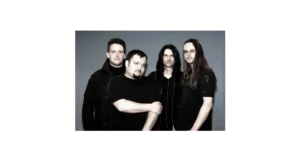Enchant: A Rising Star in Modern Progressive Rock
Enchant is a rock band formed in 1992 in California, recognized for its significant role in the modern progressive rock scene. The band’s music combines rich melodic structures, complex rhythms, and deep emotional themes. Enchant stands out for its musical prowess and impressive stage performances.
Formation and Members
Enchant was founded by Ted Leonard (vocals, guitar), Douglas A. Ott (guitar, vocals), Jim R. M. Koury (bass), and Scott Jones (drums). The band’s sound has been refined through Leonard’s powerful vocals and Ott’s impressive guitar solos. Over the years, Michael B. Garrison joined the group, contributing to the enhancement of their melodic structures. Enchant has seen several changes in its lineup throughout its career.
Musical Style and Themes
Enchant has developed a style that combines traditional progressive rock elements with modern influences. Their music often features complex melodies, variable time signatures, and profound lyrics. The lyrics typically address universal themes such as love, the search for meaning, and human relationships. This depth allows listeners to forge an emotional connection with the music.
Notable Albums
Enchant has released several successful albums throughout its career. Among the most notable are:
A Blueprint of the World (1995): This debut album helped the band establish itself in the modern progressive rock scene. Tracks like “In the Sun” showcase rich melodic structures and deep lyrics.
Wounded (1996): This album confirmed Enchant’s musical growth. Songs like “Colors Fade” highlight the emotional depth and melodic skills of the band.
Juggling 9 or Dropping 10 (2000): Considered one of the band’s best albums, it stands out for its melodic structures and innovative arrangements. Tracks like “Below the Surface” and “Sinking” provide an unforgettable experience for listeners.
Tug of War (2003): This album marks a more mature and experimental approach to the band’s music. The songs exhibit both technical skills and emotional expression.
Live Performances and Influence
Enchant is also known for its live performances. Their concerts are enhanced with visual and auditory elements, creating an unforgettable experience for the audience. The band’s impressive stage presence has helped build a large fan base.
Enchant has made an impact not only musically but also with its live performances in the progressive rock world. The band’s music serves as an inspiration for new generations of musicians and bands.
Conclusion
Enchant is an important figure in the modern progressive rock scene. With its rich melodic structures, complex rhythms, and emotional depth, the band knows how to captivate listeners. Enchant’s influence and musical legacy continue to contribute to the development of the progressive rock genre. For music enthusiasts, Enchant is a hidden treasure waiting to be discovered.




